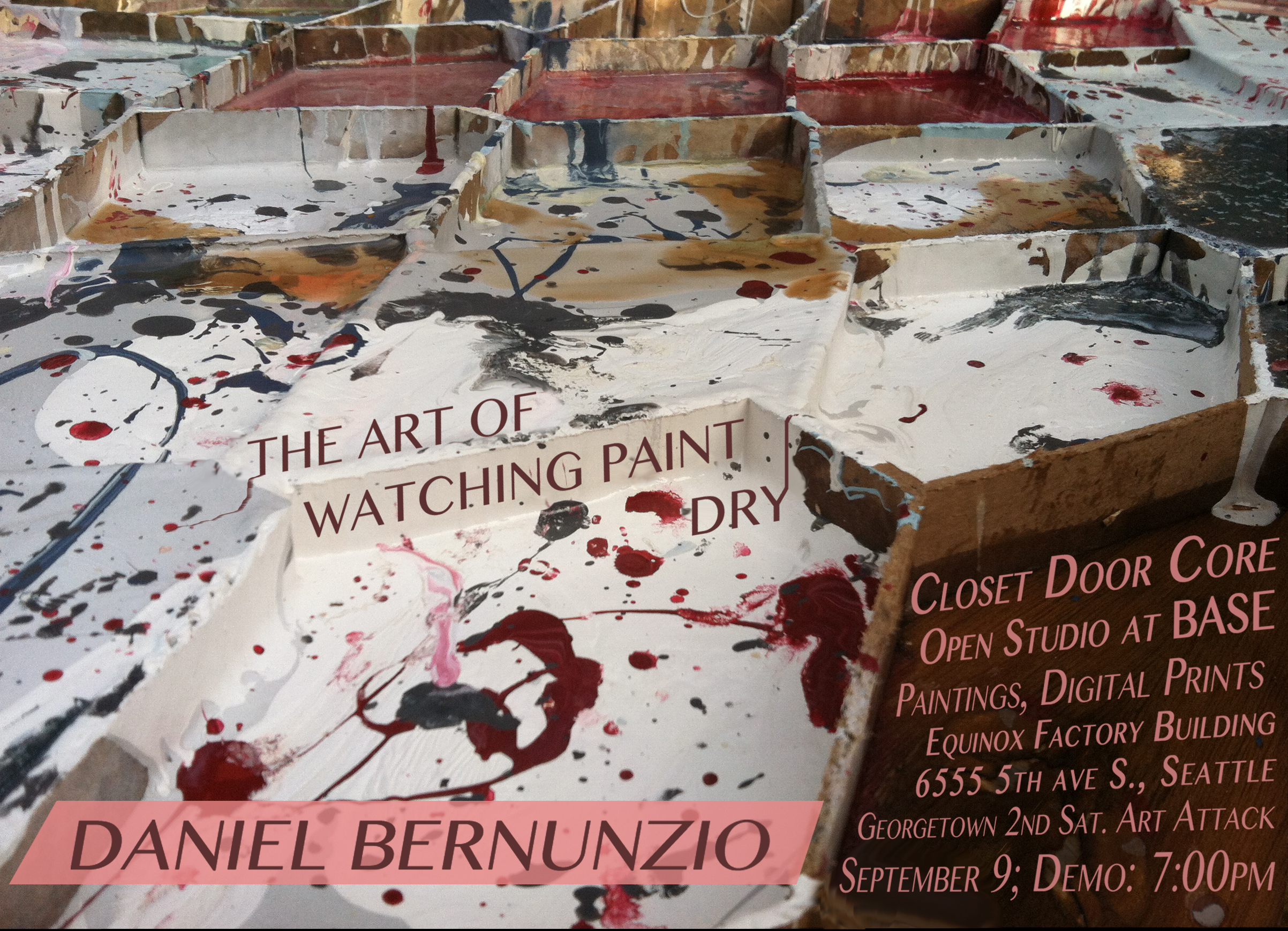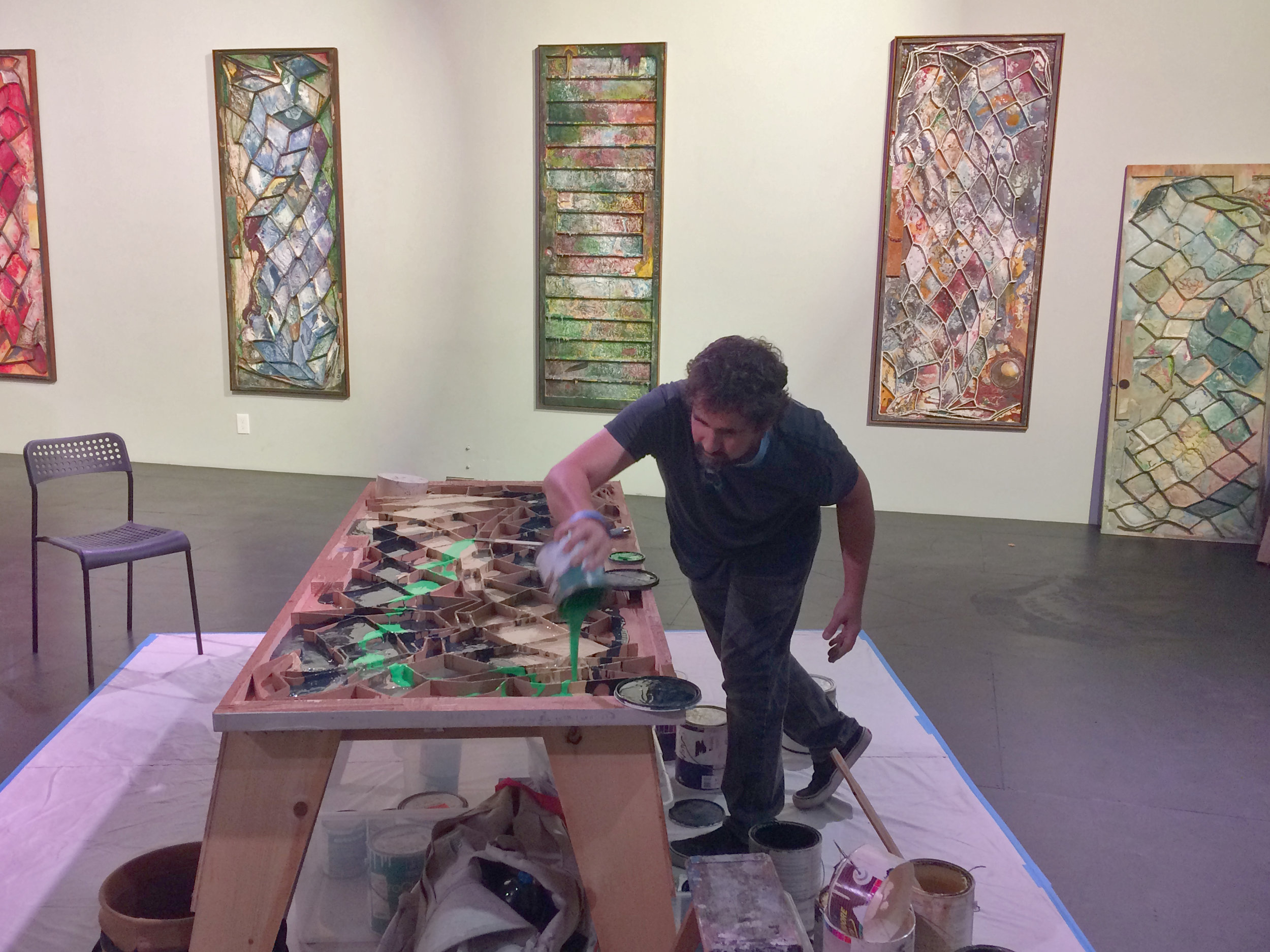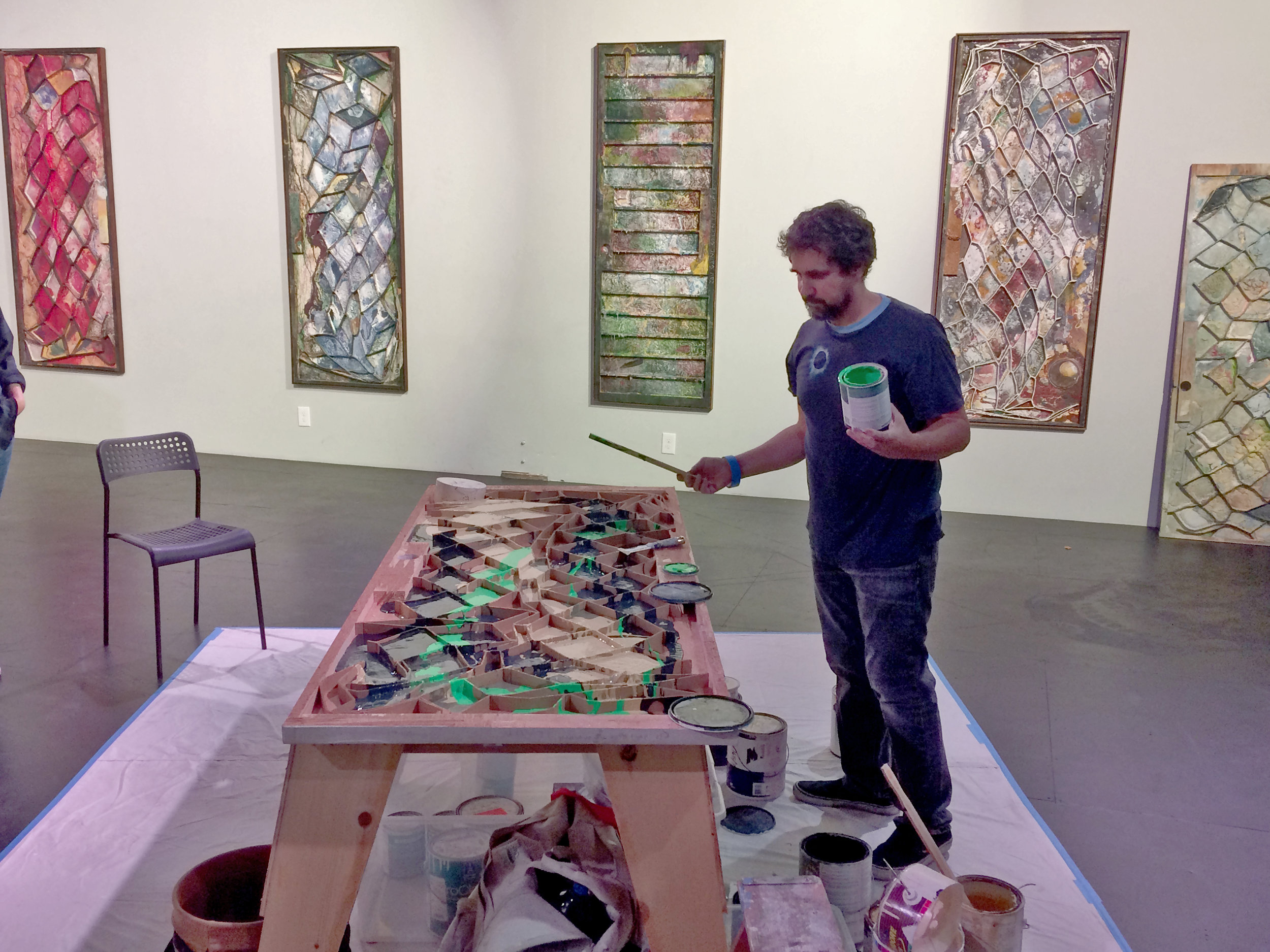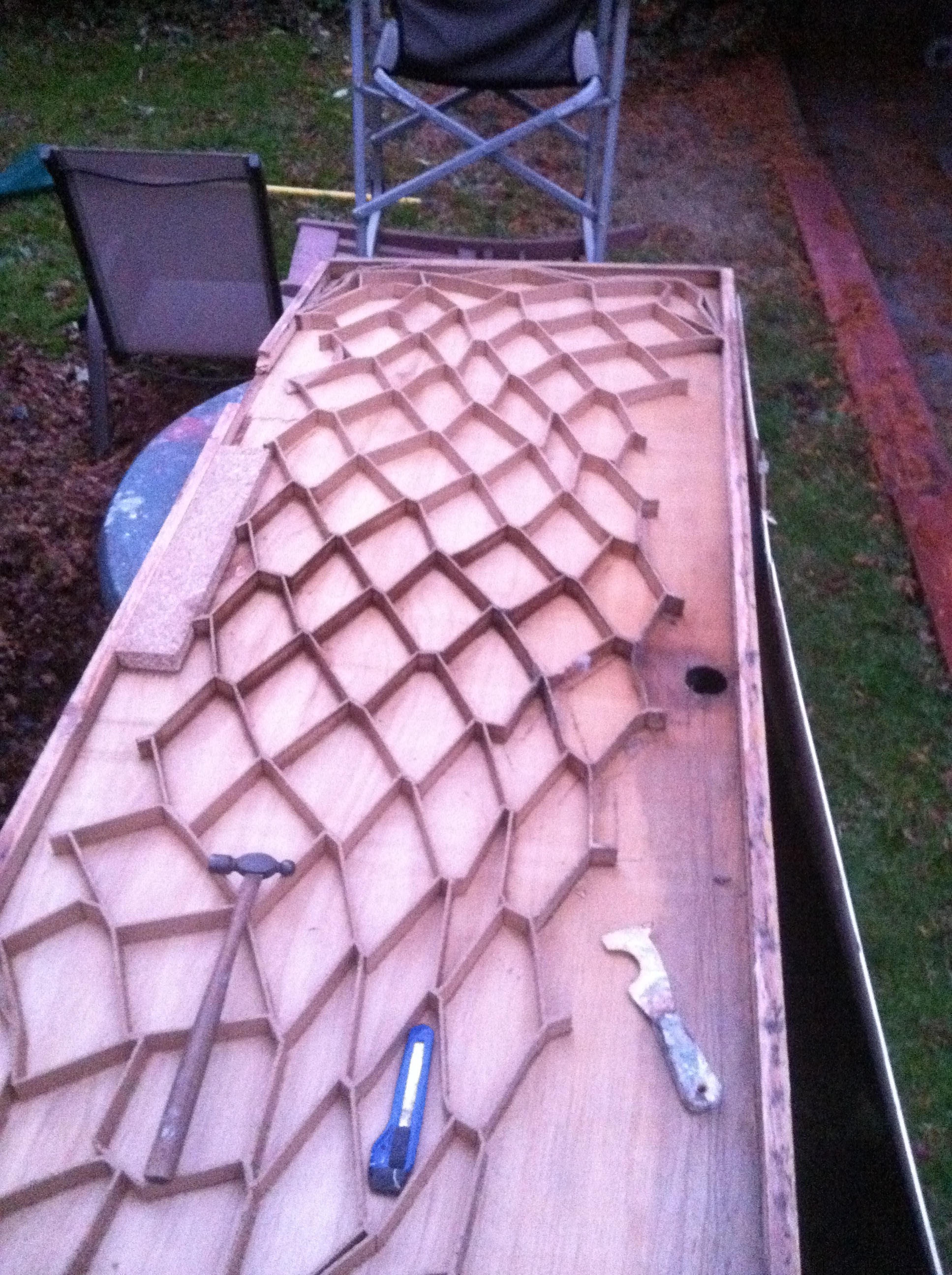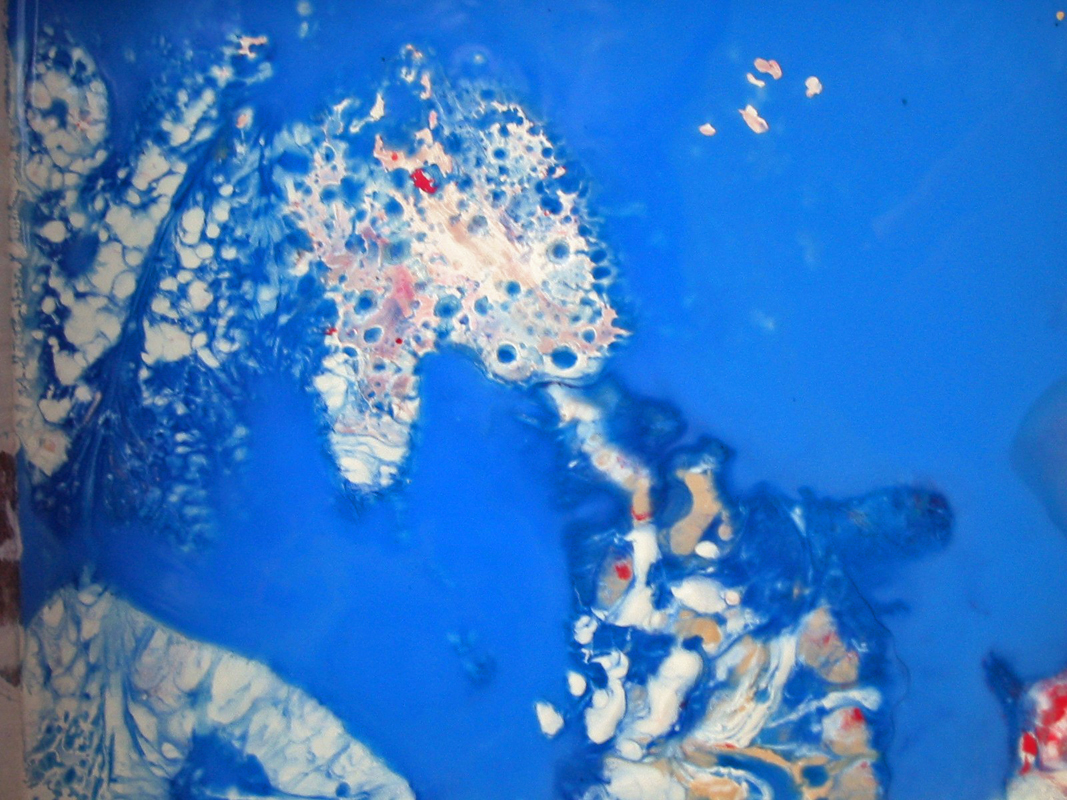Exhibition:
Closet Door Core Paintings, Digital Prints, Artist Demonstration Event
Location:
BASE, Equinox Studio, Georgetown, 6520 5th Ave. S., Seattle, Washington
Date:
September 9, 2017, 6-9, artist demo at 7:00
As all-consuming as it was pulling together this exhibition of my most experimental work (as well as incorporating space to show some more accessible pieces), being in the moment of the presentation has invigorated my drive to produce more artwork.
People asked me where the other artists from the show are, and seeing the look on the faces as I told them it is all made by me reinforced my desire to keep exploring all my imagery avenues.
Doing the demo where I described how I create these closet door pieces, and the counterpart digital prints, allowed the group of art-walkers present to witness the joy I get from the process of making them, as depicted in the pictures below. It was a fun presentation; as I talked about the process and poured out gallons of paint into the fresh closet door, there was laughter and "ee-ew's" from the audience.
The closet door core explainer:
I sometimes picked up discarded hollow closet doors that were left curbside on garbage day, thinking that they would make good surfaces to make paintings on. One time, the doorskin started peeling off of a door that got wet from the rain. I thought that if I could peel the skin off in one piece, it would make a nice thin surface for painting. I carefully removed the skin and was intrigued by the pattern of cardboard cells that were revealed in the core of the door.
From my jobs as a house painter, I had collected many partial gallons of paint that I thought I might someday use to make art with. At one point, it became obvious that I had too much off this unusable latex house paint. I learned that the best way to dispose of it would be to pour it out on a piece of cardboard, let it dry and put it in the trash.
Considering that the cells in the closet door cores are an inch deep, I decided to pour the old paint flat into the door core, let it dry, cut it up, and throw it away. However, as soon as I poured the first gallon - watching it flow and fill the cells- I knew I wouldn’t be throwing it away.
Paint that thick takes many weeks to fully cure, and since it was outside exposed to weather, it got wet, and took even longer to dry. Interesting visual displays occurred at each stage: flowing paint, skinning over, wicking of rain soaked pigment, and evaporating colored puddles. I began to photograph close-up sections of the door core, and got some stunning color compositions that looked like aerial photographs as much as messy paint. That is when I began to realize that I was bearing witness to, and documenting, the art of watching paint dry.
As much fun as it is to spend an afternoon pouring the paint, watching it flow, mix, and settle, it is equally as enjoyable to check in on the piece every few days to see what changes have occurred as the paint cures, and then to shoot macro photos of mini terrain-like textures. After curing comes even more joy as I use artist acrylic paints to enhance the color and texture of the surface, making artistic choices along the way.
As I made a second and third painting this way, I dreamed of exhibiting the paintings in a gallery setting, along with photo enlargements of some of the macro photography. Over a decade later, with four complete, a dry one to enhance, and one empty to pour for a demo, I was able to make it happen. It was at Base (Seattle) whose mission is to provide a space for artists to present experimental work at an affordable price.
In addition, an important aspect of this work is that it is largely scavenged materials. It is a small victory that these pieces of garbage, and the unusable paint, are kept out of the landfill, and used to create something of interest. I have heard them described as beautiful, and in the gallery setting, they really were uplifted. People picked up on the notion of aerial landscape. A woman told me that one painting reminded her of Italy, and later someone else thought of it as China in color and texture.
I tend to see them as cataclysmic, with longer timescales and suggestions of volcanism, glacial floes, and tectonic plate shifts. I was interested to hear Alfred Harris, Ken Kelly, and Jeffery Mitchell talk at Studio E this summer about how they each loved maps as children, and potentially seeing their work as if looking down from above. My closet door paintings and the photographic detail images fall right in line with that way of observing art on a wall.
Another aspect of these artworks is the titles, which I paint in the sidebar of each one. Each has oblique reference to some human bodily condition. “Final Tear,” “Bone Yard,” “Gaine Greene; Lose Greene”. By coming up with these titles I’m adding a layer of humor about the transient nature of bodily suffering, to juxtapose with the planet surface imagery. The paint imagery could also be seen as macro visions of microscopic scenes, a notion that brings them fully around to represent my interest in cosmology.
